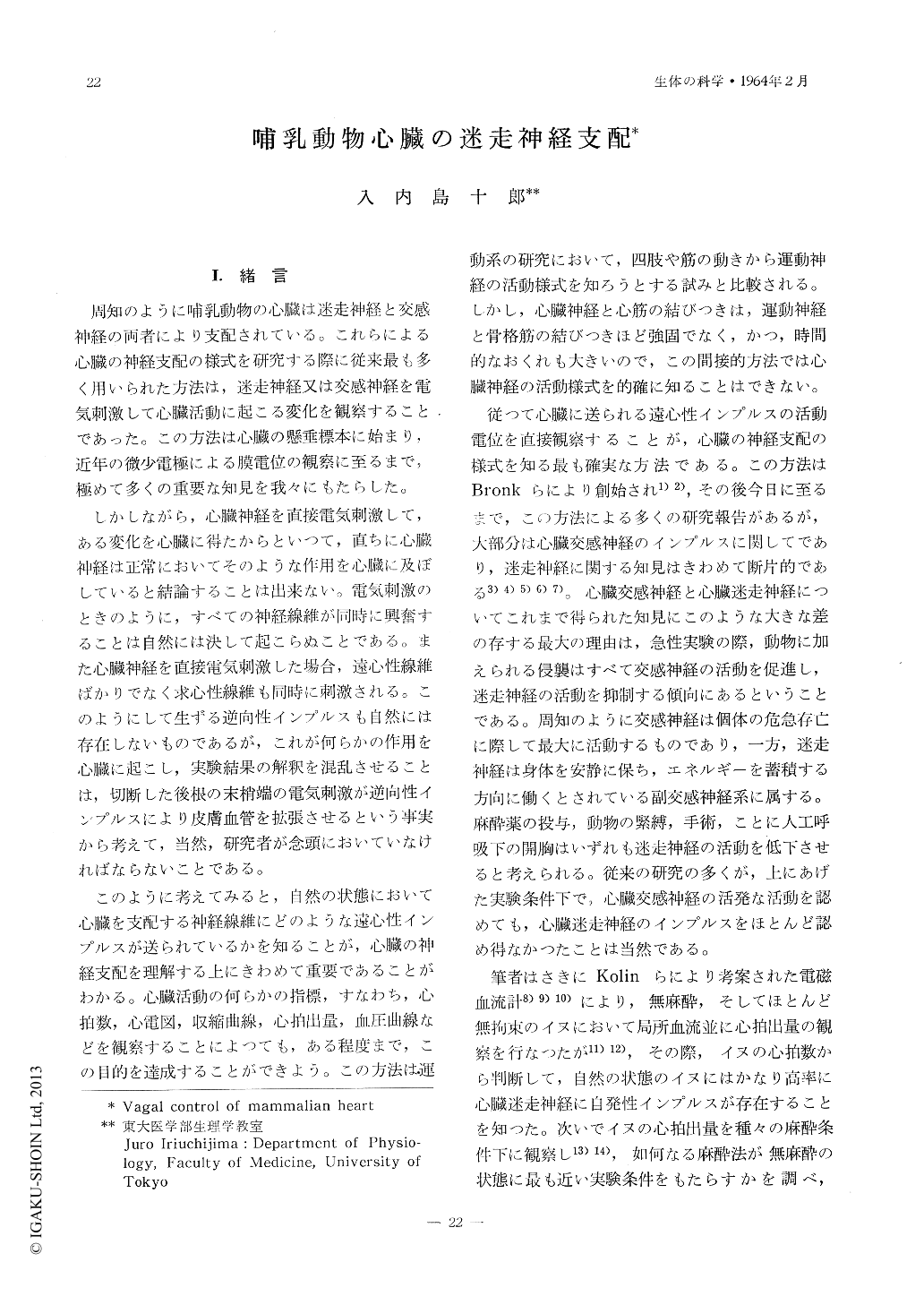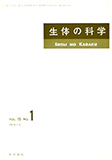Japanese
English
- 有料閲覧
- Abstract 文献概要
- 1ページ目 Look Inside
1.無麻酔及び麻酔下のイヌの電磁流量計による心臓活動の観察及び麻酔下のイヌの心臓迷走神経の遠心性活動電位の観察により,心臓の迷走神経による支配様式を調べた。
2.Morphine, chloralose, urethaneの混合麻酔のイヌにおいては,無麻酔のときと同様,心臓に対し絶えず迷走神経のインプルスが送られており,その反射性変化は心拍数を著しく変化させる。
3.すべての知覚神経の電気刺激により非特異的に反射性インプルスを生ずる心臓交感神経と異なり,心臓迷走神経は頸動脈洞神経の電気刺激により特異的に反射性インプルスを発射し,他の,上腕神経,伏在神経等の刺激は却つて非特異的に心臓迷走神経の自発性インプルスを抑制する。
1. The vagal control of the heart was stu-died by observing (1) cardiac output and regional blood flow in conscious and anesthet-ized dogs and (2) efferent cardiac vagal discharge in anesthetized dogs.
2. Under anesthesia with morphine, chlo-ralose and urethane, as in conscious state, efferent vagal impulses were incessantly sent to the heart. The reflex change of this discharge of impulses affected heart rate considerably.
3. In contrast to the cardiac sympathetic nerves in which evoked discharge can be induced nonspecifically by stimulating any sensory nerve, the cardiac vagus was excited only by stimulating the sinus nerve. Stimu-lation of other nerves such as the brachial and saphenous nerves nonspecifically inhibi-ted spontaneous impulses in the cardiac vagus.

Copyright © 1964, THE ICHIRO KANEHARA FOUNDATION. All rights reserved.


